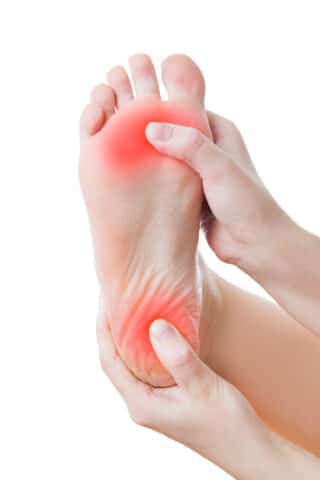
More Pain Management & Rehabilitation Articles
Diabetic Peripheral Neuropathy – Oh, My Burning Feet

Diabetes is an unfortunate affliction, which plagues the lives of millions of Americans. Most of us are already familiar with the basic understanding of diabetes as a problem in the regulation of glucose (sugar) in our bloodstreams. This simple problem of too much sugar, over time, leads to a cascade of secondary effects ultimately wreaking havoc on organ systems across the body.
It would be an overreach to attempt to discuss, or even to list, all of the end organ effects of diabetes in such a humble article so, instead, we focus on only one such complication of diabetes known as painful diabetic peripheral neuropathy (PDPN).
Although several theories for the origin of PDPN exist there is significant evidence that PDPN is the consequence of dysfunctional nerve endings in our feet, which in turn is the consequence of damage to the most delicate of arteries which supply nourishment to these nerve endings. Relentless hyperglycemia in poorly controlled diabetics leads to the destruction of the micro-vascular system and an asphyxiated peripheral nervous system responds with signals of distress we know all too well as pain.
Over time, a pattern of constant burning pain in the feet develops along with loss of sensations and even changes in the overlying skin. The pain can become severe enough to interfere with simple activities of daily living and is described as “suffering” by many. In severe cases, progression of the blood flow limitation leads to dead and gangrenous tissues necessitating around two thirds of the amputations done in our country.
Thankfully, treatments do exist for both the primary causes and secondary effects of PDPN. The single greatest way to prevent the development of PDPN is tight control of blood sugar.
Your primary physician can help you with the tools to manage your diabetes effectively and evaluate you for one of several new FDA approved medications for the symptoms of PDPN. These medications have been shown to make a positive difference in pain levels, sleep quality, and functional capacity. It is unclear at this time if these medications will have an effect on the natural progression of PDPN.
For more advanced cases of PDPN, which do not respond to trials of readily available medications, referral to a pain specialist could be considered to review other treatment options. In Europe, there is extensive experience with implantation of small devices in the body, which electrically stimulate certain nerve fibers, which in turn cause a significant improvement in blood flow to the feet.
This treats primarily the pain of PDPN and does so presumably by improving the blood flow and nutritional state of the nerve endings. In many European countries this is used in lieu of amputation.
If you are a diabetic you should work closely with your physician in managing all that comes with this chronic condition. Remember that the best way to prevent the development of PDPN and its complications is tight control of your blood glucose level.
Other Articles You May Find of Interest...
- The Secrets Behind Knee Noises: When to Seek Help
- Is Custom Bracing the Secret Weapon for Your Chronic Pain Battle?
- Is Your Pain Trying to Tell You Something? Decode and Manage Your Body’s Signals
- The Benefits of Spinal Cord Stimulation in Treating Chronic Pain
- Why Choose an Orthopaedic Specialist for Spine Treatment?
- Understanding the Impact of Aging on Your Spine
- Free Yourself From Heartburn Pain

















